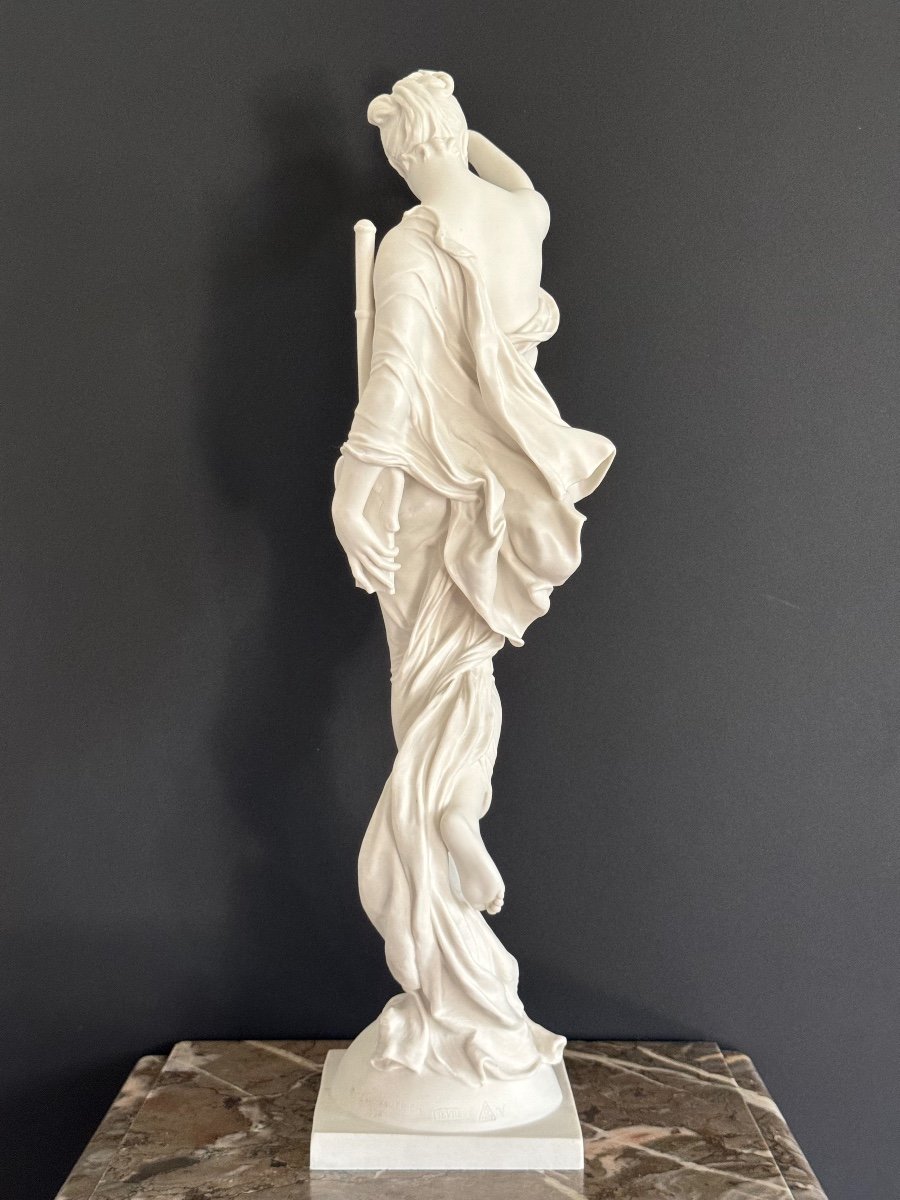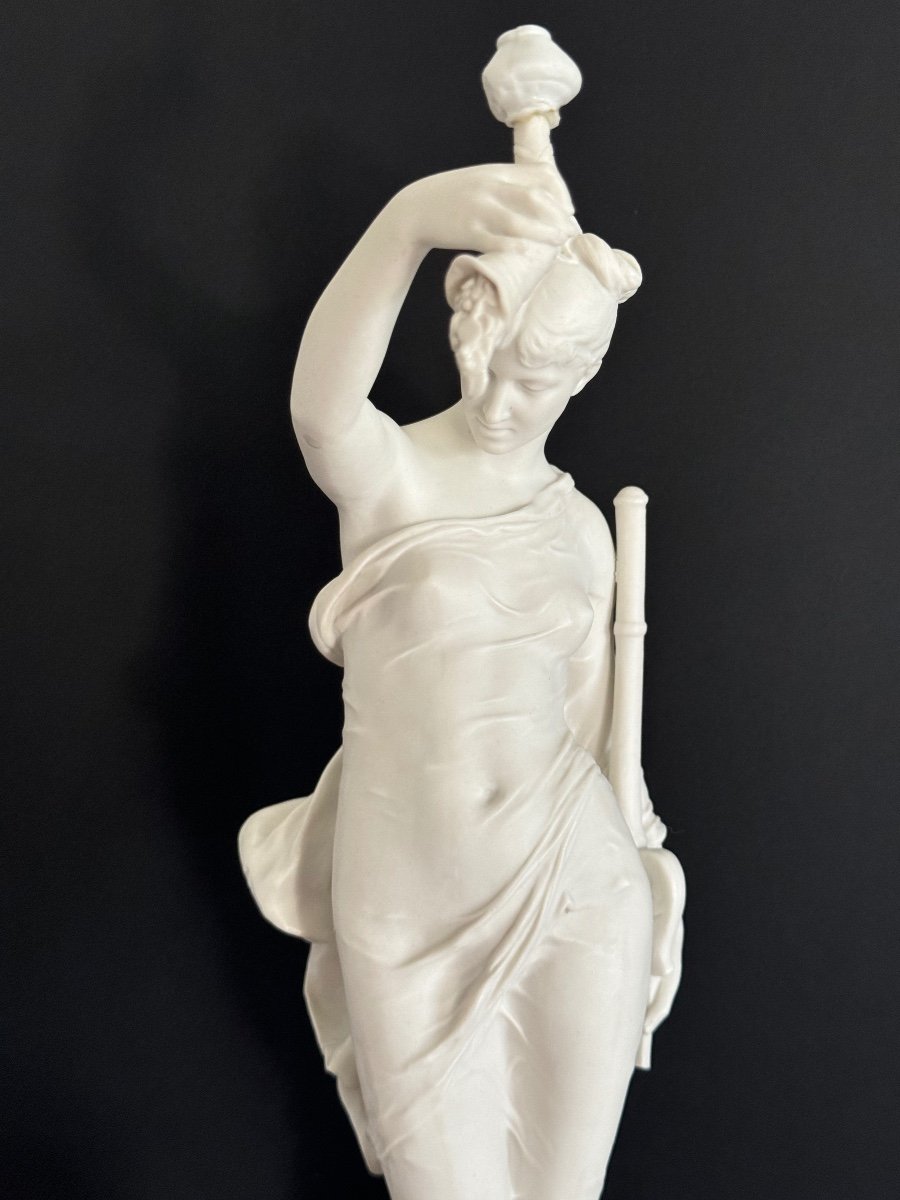Biscuit statue from the Sèvres porcelain factory
Signed Augustin Jean Moreau-Vauthier (1831-1893)
Inscription SEVRES / S1909
Height 47 cm
Base dimensions 11x11 cm
Good condition / Damage to the scepter carried in the left hand
This biscuit porcelain sculpture represents the goddess Fortune, an allegorical figure often associated with luck and destiny.
This figure is one of the most famous works of the French sculptor Moreau-Vauthier (originally exhibited in 1878 in a near-life-size version).
She stands gracefully on a wheel, a classic symbol of the instability and capricious nature of fortune. The goddess is lightly dressed in a delicate, flowing drapery that hugs her form, highlighting the sculptor's virtuosity in capturing movement and texture.
Her right arm is raised, holding a cornucopia above her head, which creates a subtle play of lines and shadows when lit. She holds a scepter (accident/see photo) in her left hand representing power and authority, emphasizing that luck and chance can rule human life in unpredictable ways.
Her slender pose and treatment of detail demonstrate the neoclassical influence on Moreau-Vauthier's work. Fortune's finely modeled face expresses a serene tranquility, in contrast to the unstable wheel on which she stands, emphasizing the theme of the delicate balance of fate. The purity and quality of the Sèvres porcelain highlights the subtle details of the drapery and the texture of the skin, testifying to the excellence of the manufacture in the late 19th century.
This porcelain version is marked S1909, an indication that the work was likely produced in connection with the Universal Exhibition in Paris that year.
This work is probably from the same series as the one acquired by Henry Walters at the Universal Exhibition in Paris (presented in the exhibition "From Rye to Raphael: The Walters Story" (2014-2016), Walters Art Museum, Baltimore).
All my objects for sale are visible in Issy-Les-Moulineaux.
For any additional information, HD photos, you can contact me at 0612513529.
















































 Le Magazine de PROANTIC
Le Magazine de PROANTIC TRÉSORS Magazine
TRÉSORS Magazine Rivista Artiquariato
Rivista Artiquariato